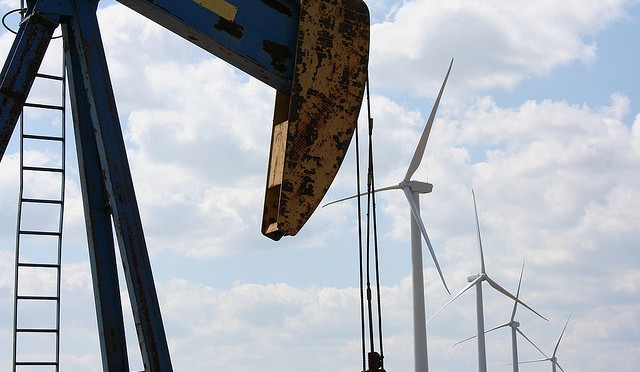Wind farms are generally engineered to withstand up to Category 3 hurricane-strength winds. Even though Hurricane Harvey struck the Texas coast as a Category 4, no wind turbines were destroyed by the storm’s winds. Why not? In coastal Texas, there are just over 2,000 megawatts of wind power capacity already installed. However, three projects representing 389 megawatts faced the worst of Hurricane Harvey – Harbor Wind (9 MW) on the north side of Corpus Christi, and the Papalote Creek I/II sites (380 MW, total) in San Patricio county. Hurricane Harvey made landfall in Texas as a Category 4 storm, with winds exceeding 130 miles per hour. It took six hours for Harvey to move 30 miles across Corpus Christi and Arkansas Pass, pummeling the area with Category 3 and Category 4 winds.

Hurricane Harvey made landfall in Texas on August 25. Data source: ERCOT (ercot.com/gridinfo/generation)
At noontime on Friday, August 25th, the Texas coastal wind projects were operating at 95 percent output, an exceptionally high output level (also called a capacity factor). As expected, several wind farms curtailed power production when wind speeds exceeded safety limits. Also, as local grid connections failed and power outages affected the entire region, wind farms remained offline until grid connection could be re-established. (In cases such as Papalote Creek, the utility transmission and distributed system was heavily damaged by the storm and estimated to not go back online for several days). Between 3-4PM, as conditions deteriorated, wind power production dropped by approximately 800 megawatts, with a regional operation rate of about 47 percent.
Over the next three days, wind power production generally increased during the daytime, and declined at nighttime – similar to “normal” coastal wind power production levels. At no time did power production from all coastal wind farms reach zero. In other words, as Hurricane Harvey was battering the coast, coastal wind power projects mostly remained online and operating, as if nothing out of the ordinary was occurring. 
Simply put, many wind farms in coastal Texas weren’t affected by Harvey’s highest-level winds. And the turbines that did experience those extreme conditions, performed as expected and shut down for self-preservation, or when the local grid system failed. As mentioned in a previous post, all energy resources are at risk of destruction from extreme weather events. Many of the Gulf’s offshore oil platforms were evacuated ahead of the storm. Fortunately, Texas’ coastal wind farms appear to have dodged a bullet.
cleanenergy.org

